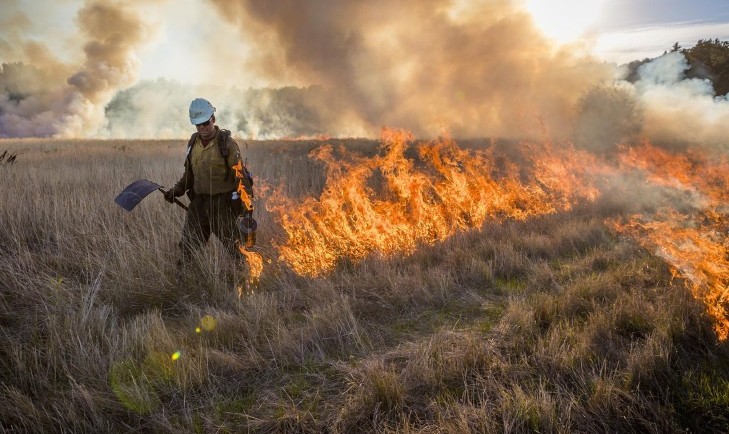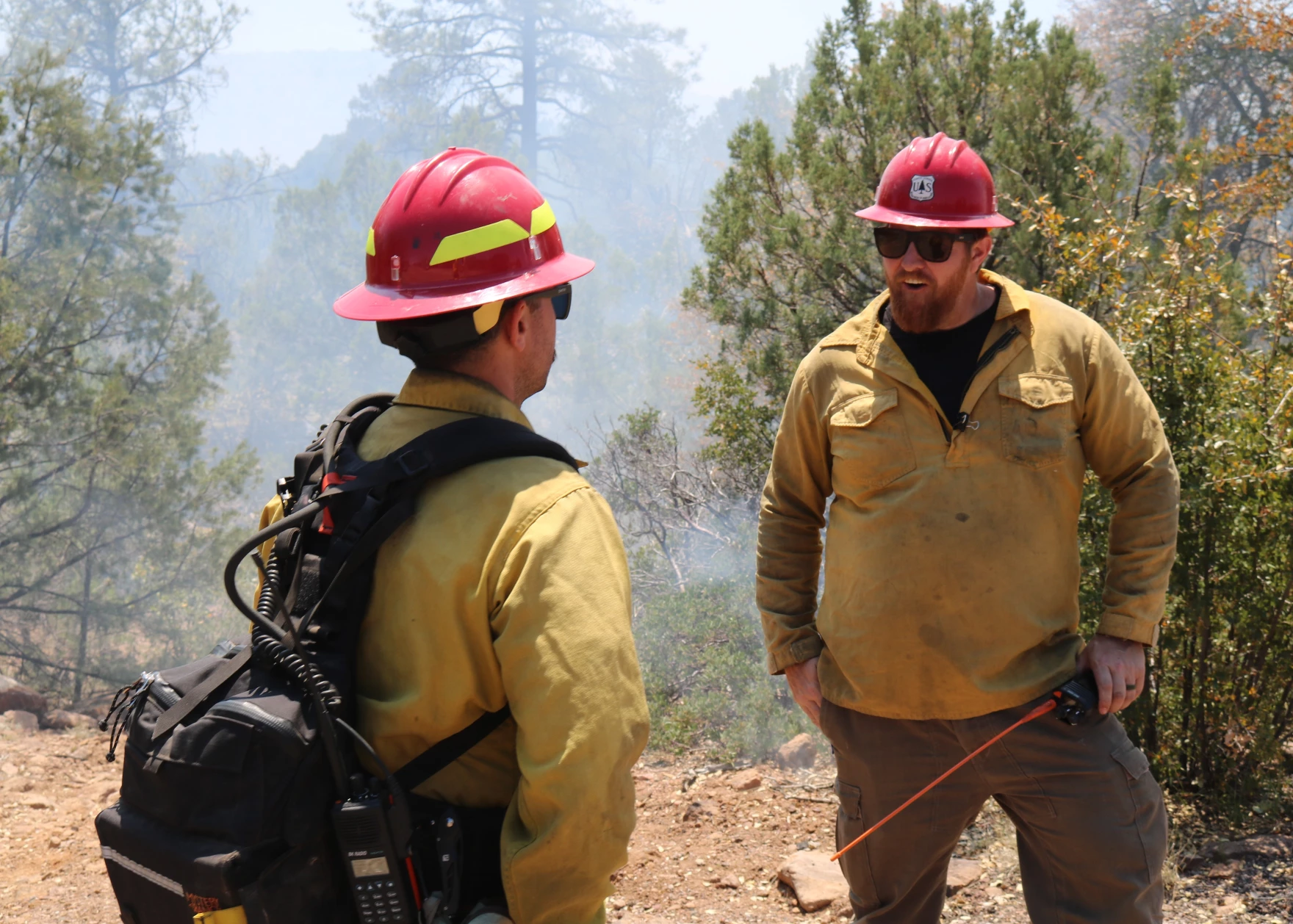07/25/24
Best of the West: Staying prepared for disaster; climate investments; Sundance festival; electric buses; Nevada electric vehicle boom; Mongol Derby

The Western Governors' Association keeps you updated on the latest news in the West. Here are the top stories for the week starting July 22, 2024. (Photos courtesy of The Nature Conservancy, Gabriel Pietrorazio/KJZZ, The Sundance Institute, and the Equestrianists Mongol Derby).
Wildfire season is in full swing across the West, with devastating fires sweeping across areas of New Mexico, Oregon, California, and elsewhere. The South Fork and Salt Fires near Ruidoso, New Mexico, sprung up last month, burning 25,000 acres. Since the fires, as many as eight different floods have torn down the scarred mountainsides, leading to further destruction in the area.
Western Governors have turned significant attention toward creating policy around preparing for, and responding to, disasters like this one. At this summer’s Annual Meeting, the Governors approved an update to WGA’s policy resolution on disaster preparedness and response, which calls for collaboration and cooperation across all levels of government for mitigation, preparedness, response, and recovery.
Ongoing projects and partnerships across the West are helping communities prepare for natural disasters and respond quickly and effectively when they do occur.
In Arizona, the San Carlos Apache tribe is working closely with the U.S. Forest Service to treat thousands of acres of fire-prone forests and grassland. The collaboration is possible thanks to a 2004 law that paved the way for the Forest Service to collaborate with federally recognized tribes to conduct cross-boundary restoration and mitigation work on national forest and reservation lands.
The collaborative approach allows tribes like the San Carlos Apache to bring more traditional land management approaches into play alongside the Forest Service.
Cassie Moses, the Tribe’s forest manager, recognizes that their techniques for management are different, saying, “our prescribed burn practices are different than the government,” though she sees the collaboration as unique and effective, as it’s “not every day you see government-to-government relationships happening. This is a good example to other tribes that this is something their tribe can benefit from.”
Elsewhere in the West, collaboration between federal agencies and nonprofit organizations are easing staffing shortages for prescribed fire and other mitigation work. In Idaho and other western states, the Nature Conservancy is working with the Forest Service to help provide the manpower that is needed to complete much-needed mitigation work. Organizations like the Nature Conservancy are bringing in crews of wildland firefighters under the direction of the Forest Service, which has often lacked the staff it needs to treat the vast swaths of western forests that are prone to catastrophic fire.
As WGA’s policy resolution on disaster preparedness details, adequate response and recovery efforts are often just as important as mitigation and preparedness.
The West has faced no shortage of floods, fires, and other extreme weather events, which require the type of response that Western Governors call for.
In Glenwood Springs, Colorado, where devastating fires and subsequent flooding have caused significant damage, the community has pulled together state, federal, and local resources and knowledge to recover and protect against future disasters.
A major part of the effort has focused on shoring up the area’s water infrastructure, through city initiatives as well as state funding to prevent erosion and safeguard water systems.
These efforts also include reseeding the burned areas to restore healthy and resilient forests in the future. Glenwood Springs, like many communities in vulnerable areas of the West, is also developing essential emergency evacuation and communication plans to increase preparedness and streamline the response in the event of another fire or flood in the area.
Billions for climate projects: the Environmental Protection Agency (EPA) recently announced a $4.3 billion investment in local climate projects across the country. 12 projects will benefit communities in the West with funding that totals in the billions.
In Colorado, $328 million will be split between the Colorado Energy Office and the Denver Regional Council of Governments to decarbonize by reducing methane emissions and retrofitting residential and commercial buildings with green technology. The projects in Colorado alone are expected to eliminate 173 million tons of greenhouse gas emissions by 2050.
In Montana, the state’s Forest, Community and Working Landscapes Climate Resiliency Project will receive nearly $50 million to improve forest management and mitigate wildfires and coal seam fires. It will also expand community forests, improve soil health, and bring down emissions from agriculture, which is expected to cut greenhouse emissions by a total of 15 million tons by 2050.
Other western projects include green transportation improvements in Texas, climate-smart agriculture in Nebraska, and residential energy efficiency projects for the Nez Perce Tribe in Oregon and Idaho, among others.
Sundance festival: three western cities are on the shortlist to host the coveted Sundance Film Festival, which is looking into a venue change after the 2026 festival. Each January, Sundance hosts a global exposition for independent filmmakers, and the festival has a history of launching films to international success, with screenings of films such as Jordan Peele’s Get Out, Whiplash from Damien Chazelle, and Quentin Tarantino’s Reservoir Dogs.
as Jordan Peele’s Get Out, Whiplash from Damien Chazelle, and Quentin Tarantino’s Reservoir Dogs.
Sundance has been held in Park City, Utah since 1985, though the festival’s contract with the Utah resort town is set to expire in 2027. Making the final six cities under consideration by the Sundance Institute selection committee are Boulder, Colorado, Santa Fe, New Mexico, and a renewal for Salt Lake City/Park City, Utah.
Members of the selection committee will visit each of the finalists in the coming weeks before making a final selection.
Electric buses: the Federal Transit Administration recently awarded Utah with more than $18 million to replace some of the Utah Transit Authority’s (UTA) diesel-powered buses with an electric fleet.
15 new electric buses will join the 34 that UTA currently operates, which will chip away at the goal of rolling out 200 electric buses by 2034. The funding comes as part of a $1.5 billion investment to modernize transit infrastructure across 47 states.
Nevada EV boom: according to a recent report, Nevada is helping lead the country in a shift toward adopting electric vehicles. The state has drawn in $15 billion in private investment in electric vehicle and battery production, resulting in more than 12,000 jobs in the state.
Nevada currently ranks fifth in the nation for new investment in electric vehicle and battery production, as well as fifth in electric vehicle adoption per 1,000 vehicles. 45,000 electric vehicles are currently on the road in Nevada.
Three years ago, the state legislature passed a mandate that required NV Energy to expand its infrastructure for EV charging stations, resulting in a $100 million investment to build nearly 2,000 chargers. The state is also likely to receive $38 million from the National Electric Vehicle Infrastructure program to build even more chargers in the Silver State.
Mongolian derby: Dede Anders of Wyoming is heading to Mongolia to compete in one of the world’s longest and toughest horse races. The 620-mile race across the country’s vast isolated wilderness will span nine days with up to 11 hours in the saddle each day.
Competitors must navigate between 25 checkpoints on an unmarked route while riding “semi-wild” Mongolian horses. Only 50 riders are selected to compete each year, with a handful of Americans competing this year. Wyoming has a history of strong performances in the Mongol Derby, with 70-year-old Cheyenne native Robert Long winning in 2019. Not only was Long the oldest to ever win the race, but he was also the oldest to ever complete the course.
each year, with a handful of Americans competing this year. Wyoming has a history of strong performances in the Mongol Derby, with 70-year-old Cheyenne native Robert Long winning in 2019. Not only was Long the oldest to ever win the race, but he was also the oldest to ever complete the course.